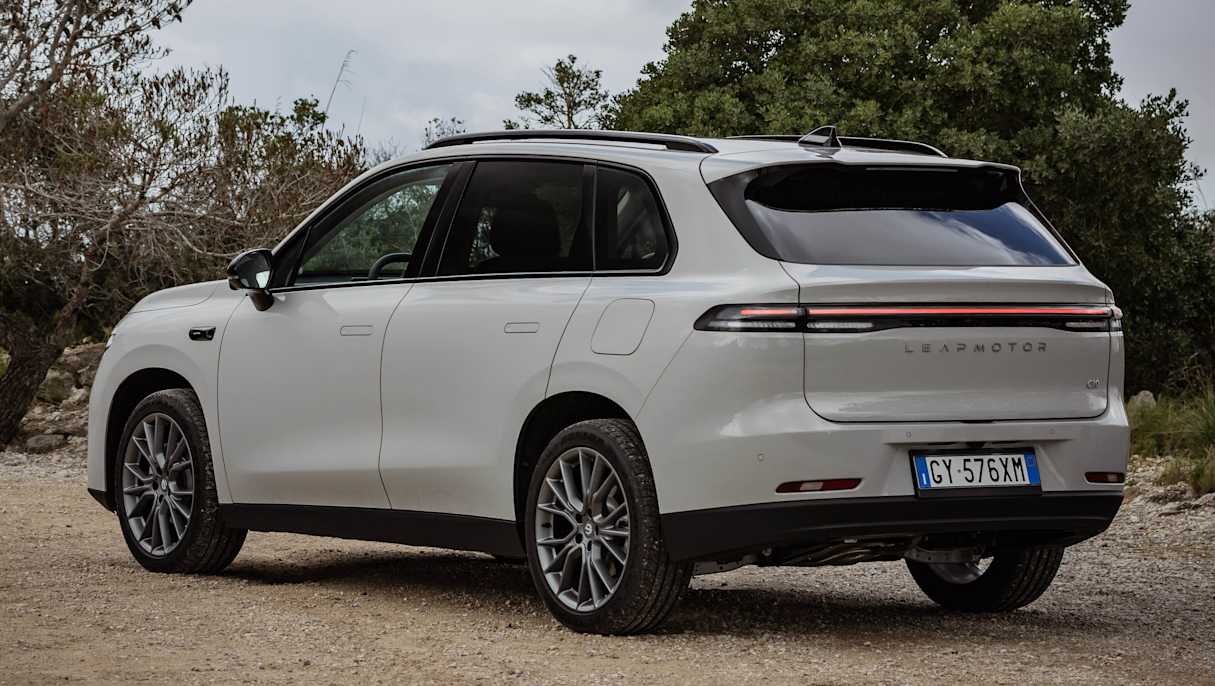In a rapidly changing new-car market, Australians are increasingly familiarising themselves with an array of electric vehicle technologies.
Most of us have at least heard of a plug-in hybrid, let alone an electric vehicle. But what do we know about range-extender electric vehicles?
The burgeoning hybrid-electric technology, codenamed REEV or EREV, is emerging as a favoured powertrain of choice in China, coinciding with the proliferation of Chinese brands on the Australian market.
One of those brands is Leapmotor. It operates outside of China under the name of Leapmotor International, a joint venture between the brand’s Chinese parent company and European-American automotive conglomerate Stellantis.
Andy Hoang, Leapmotor’s local CEO, believes the range-extender platform underpinning its new C10 SUV, which landed in local showrooms this month, is the perfect proposition for the local market as EV sales dwindle and demand for hybrid vehicles reaches record heights.
"You think about [Australia’s] demand for electric vehicles versus its demand for hybrids and plug-in hybrids, this is what Australians want," said Hoang.
"This technology, in our minds, is the best type of hybrid out there,” he added.
REEVs operate uniquely compared to both electric vehicles (EVs) and plug-in hybrid electric vehicles (PHEVs). Despite carrying a small petrol engine, as is the case with a PHEV, the engine on a REEV acts solely as a generator, charging the onboard battery, which, in turn, powers the electric motors that drive the wheels.

This results in the low carbon emissions and fuel consumption associated with plug-in hybrid cars, while offering a driving experience akin to a pure EV with quiet yet responsive acceleration.
The key differentiator between an EV, however, is range. REEVs boast significantly longer driving ranges than their purely electric counterparts and can cover long distances with less charge thanks to their onboard generator and dynamic driving modes.
Despite the Leapmotor C10 REEV not being the first REEV to land on Australian roads – the BMW i3 holds that title – nor the only REEV currently available – Nissan’s e-Power hybrids are also considered REEVs – it is arguably the most compelling offering yet.
Priced at a competitive $45,900 drive-away, Leapmotor claims the C10 REEV can cover an impressive 1190km of total driving range and 170km of pure electric range under the NEDC cycle. Notably, the total range figure more than doubles the claimed 477km range of its pure-electric sibling.
Tianshu Xin, Global CEO of Leapmotor International, believes this technology will be crucial in alleviating range anxiety and providing a practical intermediate solution to Australia's lagging charging infrastructure.

"Outside of China, in many countries, the charging infrastructure is less developed. So, to address customer range anxiety, [the C10] range-extender is perfect, because you don’t need to worry about electric range anymore," said Xin.
“If you want to drive from Sydney to Melbourne… you can drive between the two cities without charging. So that addresses the issue of customer needs, and also addresses the issue of charging infrastructure," he added.
A report from Energy Networks Australia (ENA) revealed that Australia’s charging infrastructure lags significantly behind the rest of the world with just one public charging site for every 68 EVs, compared to a global average of one charger for every 11 EVs.
This gap in infrastructure is, in part, contributing to a slow uptake of EVs in Australia, sales of which fell 19.9 per cent last month compared to the previous year. Demand for traditional hybrid vehicles, such as the Toyota RAV4, meanwhile, is skyrocketing.
According to data from the Federal Chamber of Automotive Industries, sales of hybrid cars (including plug-in hybrids) accounted for a record 21 per cent of new-car sales in the first three months of this year.
It’s little wonder, then, that Leapmotor anticipates its C10 REEV will outsell its EV equivalent in Australia, which, as of March, has sold 138 examples since deliveries commenced late last year.

"Our customers are telling us that this will be the most popular technology… although the BEV (battery electric vehicle) segment is still there – and it will stabilise at some point – this is where we think customers will choose," said Hoang.
Reinforcing its confidence in the technology, Leapmotor's next model slated for Australia, the smaller B10 electric SUV, will also be offered with a REEV powertrain alongside a full EV version.
Fellow Chinese carmakers could also soon be eyeing the REEV market in Australia. Chery recently announced global plans to introduce 19 new hybrid models this year, several of which will be REEVs.
While the brand has yet to confirm a REEV model for Australia, instead indicating its preference for plug-in hybrids, Chery and several other automakers interested in the technology will no doubt be guided by the sales performance of the Leapmotor C10 REEV Ultra Hybrid.
As always, though, only time will tell whether Australian buyers truly embrace the technology.























